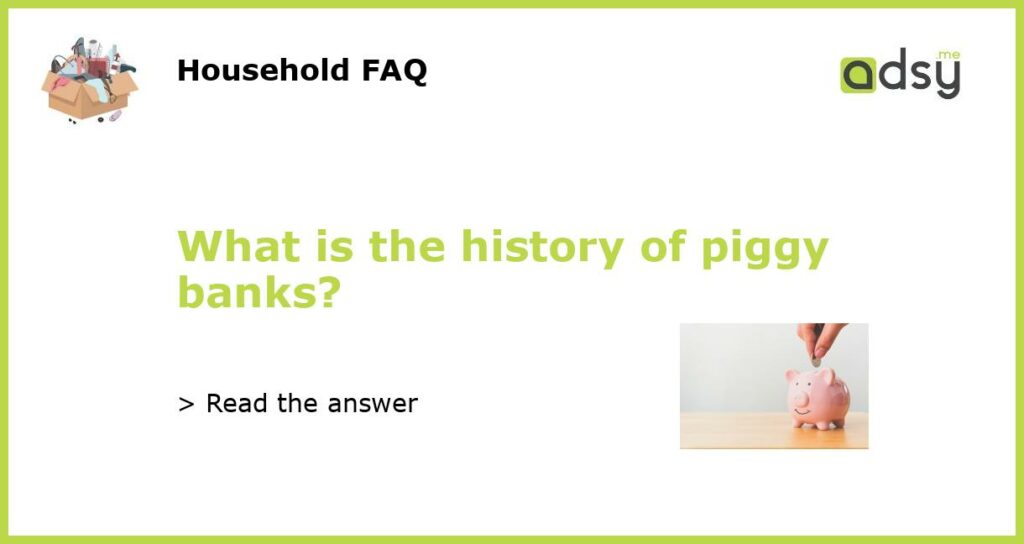The Origins of Piggy Banks
The history of piggy banks can be traced back to ancient times. The earliest form of piggy bank can be found in ancient Greece. These early versions were made of clay and shaped like a pig. The Greeks believed that keeping a pig-shaped container in the home would bring good luck and prosperity.
The use of pig-shaped containers for saving money spread throughout Europe during the Middle Ages. In England, these containers were commonly made of clay and referred to as “pygg jars.” The term “pygg” simply referred to the type of clay used to make the jars, but over time, the pronunciation shifted to “pig,” and the jars came to be shaped like pigs as well.
Piggy Banks in Different Cultures
While piggy banks are commonly associated with Western culture, they can also be found in other parts of the world. In some Asian countries, for example, ceramic piggy banks have been used for centuries. In China, pig-shaped coin banks are often given as gifts during the Lunar New Year, symbolizing good fortune and wealth.
In Japan, the piggy bank is known as “choken bako,” which translates to “saving box.” These pig-shaped banks are often decorated with adorable designs and are popular among children as well as adults.
Evolution and Modern-Day Piggy Banks
Over time, piggy banks have evolved in both materials and design. Early piggy banks were made of simple materials such as clay or ceramic. However, as manufacturing techniques improved, piggy banks began to be made from a wide range of materials, including plastic, metal, and even glass.
In recent years, piggy banks have also become more creative and innovative in design. There are now piggy banks in the shape of various animals, cartoon characters, and even celebrities. Some piggy banks even have electronic features, such as counting the coins or making sounds when money is inserted.
The Symbolism of Piggy Banks
Piggy banks have come to symbolize the act of saving money. The piggy bank serves as a physical reminder to set aside some money for the future. The act of depositing coins or bills into a piggy bank also provides a sense of accomplishment and progress towards financial goals.
Piggy banks can also be used as a tool for teaching children about the value of money and the importance of saving. By introducing the concept of a piggy bank at an early age, children can develop good money management habits that can benefit them throughout their lives.
The Future of Piggy Banks
With the rise of digital payments and cashless transactions, the future of piggy banks may seem uncertain. However, piggy banks continue to be popular as both decorative items and practical tools for saving money.
As technology continues to advance, it is possible that piggy banks may incorporate digital features, such as mobile payment capabilities or integration with online banking platforms. This could allow users to track their savings digitally while still enjoying the traditional charm of a piggy bank.
Regardless of how they may evolve, piggy banks will likely continue to play a role in teaching financial responsibility and serving as a visual representation of the value of saving for future goals.






